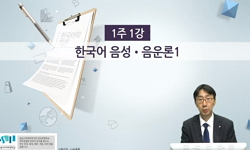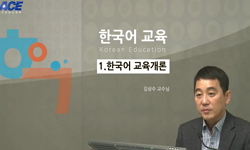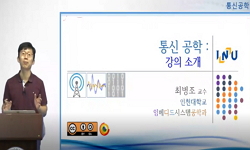This study investigates how advanced Uzbek learners of Korean use case particles in spontaneous spoken discourse, with a focus on identifying patterns and analyzing the causes of common errors. Based on approximately seven hours of recorded Zoom conve...
http://chineseinput.net/에서 pinyin(병음)방식으로 중국어를 변환할 수 있습니다.
변환된 중국어를 복사하여 사용하시면 됩니다.
- 中文 을 입력하시려면 zhongwen을 입력하시고 space를누르시면됩니다.
- 北京 을 입력하시려면 beijing을 입력하시고 space를 누르시면 됩니다.

우즈베크인 한국어 학습자의 구술발화에 나타난 한국어 격조사 사용 양상 = An Analysis of Korean Case Particle Usage in the Oral Discourse of Uzbek Learners of Korean
한글로보기부가정보
다국어 초록 (Multilingual Abstract)
The findings show that among a total of 7,258 particles used, 5,451 (75.1%) were case particles, with high frequencies of accusative (‘-을/를’), nominative (‘-이/가’), and adverbial case particles (‘-에’, ‘-에서’). The most common error type was substitution (55.0%), followed by omission (32.5%) and malformation (12.5%). The primary cause of these errors was first language interference (47.5%), along with intralingual errors (32.5%) and developmental errors (20.0%). Frequent issues included confusion between similar particles (e.g., ‘-에’ vs. ‘-에서’, ‘-이/가’ vs. ‘-을/를’), omission of essential particles in sentence construction, and misuse of non-existent forms due to structural misunderstanding.
These results highlight the necessity of functional and contrastive instruction of case particles in Korean language education, especially for Uzbek learners. The study also emphasizes the importance of incorporating data-driven feedback and developing tailored educational materials that consider the influence of learners’ native language. By focusing on natural spoken discourse, this research provides meaningful pedagogical insights that can contribute to more effective teaching strategies and curriculum development in Korean language education.
This study investigates how advanced Uzbek learners of Korean use case particles in spontaneous spoken discourse, with a focus on identifying patterns and analyzing the causes of common errors. Based on approximately seven hours of recorded Zoom conversations involving ten advanced-level Uzbek learners, the study transcribed and analyzed the data using a morpheme analyzer to examine both quantitative and qualitative aspects of case particle usage.
The findings show that among a total of 7,258 particles used, 5,451 (75.1%) were case particles, with high frequencies of accusative (‘-을/를’), nominative (‘-이/가’), and adverbial case particles (‘-에’, ‘-에서’). The most common error type was substitution (55.0%), followed by omission (32.5%) and malformation (12.5%). The primary cause of these errors was first language interference (47.5%), along with intralingual errors (32.5%) and developmental errors (20.0%). Frequent issues included confusion between similar particles (e.g., ‘-에’ vs. ‘-에서’, ‘-이/가’ vs. ‘-을/를’), omission of essential particles in sentence construction, and misuse of non-existent forms due to structural misunderstanding.
These results highlight the necessity of functional and contrastive instruction of case particles in Korean language education, especially for Uzbek learners. The study also emphasizes the importance of incorporating data-driven feedback and developing tailored educational materials that consider the influence of learners’ native language. By focusing on natural spoken discourse, this research provides meaningful pedagogical insights that can contribute to more effective teaching strategies and curriculum development in Korean language education.
국문 초록 (Abstract)
분석 결과, 전체 조사 7,258건 중 격조사는 5,451건으로 약 75.1%를 차지하였으며, 주로 ‘-을/를’, ‘-이/가’, ‘-에’, ‘-에서’ 등의 사용 빈도가 높게 나타났다. 오류 유형은 대치 오류가 55.0%로 가장 높았고, 생략 오류(32.5%), 오형태 오류(12.5%)가 뒤를 이었다. 오류 원인은 모국어 간섭이 47.5%로 가장 큰 비중을 차지했으며, 이어 언어 내적 오류(32.5%), 발달 오류(20.0%) 순으로 나타났다. 특히부사격 조사의 기능 혼동, 주격과 목적격의 대치, 조사 생략 등이 자주 관찰되었으며, 이는 조사 간 의미 구분의 어려움, 우즈베크어의 단순한 격 체계, 중간언어 단계에서의 전략적 언어 처리 등 복합적인 요인에 기인한 것으로 해석된다.
이러한 결과는 격조사 교육에서의 구어 자료 기반의 실제 발화 중심 교수 전략의 필요성과 모국어 간섭을 고려한 맞춤형 교육자료 개발의 중요성을 시사한다. 또한, 본 연구는 문어 중심 오류 분석의 한계를 극복하고 학습자의 실제 언어 운용능력을 반영한 실증적 자료를 제공함으로써, 향후 교재 개발 및 교수법 설계에 유의미한 기초자료가 될 수 있다.
이 연구는 한국어를 제2언어로 학습하는 우즈베크 고급 학습자의 실제 구술 발화에서 나타나는 격조사 사용 양상을 실증적으로 분석하고, 그 오류 유형 및 원인을 규명함으로써 한국어 격조...
이 연구는 한국어를 제2언어로 학습하는 우즈베크 고급 학습자의 실제 구술 발화에서 나타나는 격조사 사용 양상을 실증적으로 분석하고, 그 오류 유형 및 원인을 규명함으로써 한국어 격조사 교육의 개선 방안을 모색하는 데 목적이 있다. 분석 자료는 총 10명의 우즈베크인 고급 학습자가 Zoom을 통해 자유롭게 대화한 7 시간 분량의 구술 데이터를 전사하고, 형태소 분석기를 활용하여 조사 사용 현황을 정량⋅정성적으로 분석하였다.
분석 결과, 전체 조사 7,258건 중 격조사는 5,451건으로 약 75.1%를 차지하였으며, 주로 ‘-을/를’, ‘-이/가’, ‘-에’, ‘-에서’ 등의 사용 빈도가 높게 나타났다. 오류 유형은 대치 오류가 55.0%로 가장 높았고, 생략 오류(32.5%), 오형태 오류(12.5%)가 뒤를 이었다. 오류 원인은 모국어 간섭이 47.5%로 가장 큰 비중을 차지했으며, 이어 언어 내적 오류(32.5%), 발달 오류(20.0%) 순으로 나타났다. 특히부사격 조사의 기능 혼동, 주격과 목적격의 대치, 조사 생략 등이 자주 관찰되었으며, 이는 조사 간 의미 구분의 어려움, 우즈베크어의 단순한 격 체계, 중간언어 단계에서의 전략적 언어 처리 등 복합적인 요인에 기인한 것으로 해석된다.
이러한 결과는 격조사 교육에서의 구어 자료 기반의 실제 발화 중심 교수 전략의 필요성과 모국어 간섭을 고려한 맞춤형 교육자료 개발의 중요성을 시사한다. 또한, 본 연구는 문어 중심 오류 분석의 한계를 극복하고 학습자의 실제 언어 운용능력을 반영한 실증적 자료를 제공함으로써, 향후 교재 개발 및 교수법 설계에 유의미한 기초자료가 될 수 있다.
동일학술지(권/호) 다른 논문
-
영상 기반 활용 교육에서 읽기와 쓰기 능력의 상호 강화 가능성 탐색 - <지혜학교>와 <동서울 대학교> 수업 사례 중심으로 -
- 백록어문교육학회
- 권미숙
- 2025
- KCI등재후보
-
박주택 시에 나타난 선택적 불행과 시적 불안 의식 연구 - 박주택 시집 카프카와 만나는 잠의 노래를 중심으로 -
- 백록어문교육학회
- 이수빈
- 2025
- KCI등재후보
-
- 백록어문교육학회
- 박동근
- 2025
- KCI등재후보
-
튀르키예 대학 내 직업 목적을 위한 비교과 한국어교육 과정 마련 방안 - 이스탄불대학교 한국어문학과 졸업생과 이스탄불 인근에 소재한 한국 기업의 요구 조사를 중심으로 -
- 백록어문교육학회
- 손영은
- 2025
- KCI등재후보




 KISS
KISS






